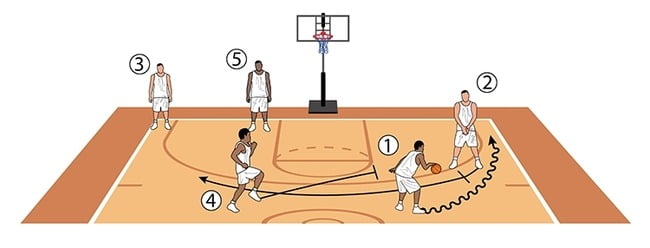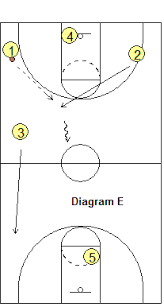Simple Basketball Plays For Youth- Take Command of Pressure Situations
There are basic basketball plays made for every possible situation you could find your team in. Search the net, and you’ll find plays for when the team is down by three points with seconds on the clock;
for when you are up by two points with a minute and a half remaining; for when your point guard gets fouled out with two minutes to go; and for when your center gets fouled out in the first half. Name the situation, and you’ll find a basketball play designed to work with it.
Your coaching strategies need to include some of these along with your usual offensive plays, but we need to do this within reason – we will not have enough time in the season to spend rehearsing plays for every eventuality – there are just too many possible situations and not enough time in the day.
But there are some situations that we do need to be well prepared for because the likelihood of having them pop up in a game is very high.
We can pretty much expect to need to inbound the ball at some point every game, and although most leagues have ditched the jump ball on held balls in favor of alternating possession, games still begin with a jump ball. And of course, teams press, trying to rattle our offense and force turnovers.
We don’t want to overload or overwhelm our players with too many plays, but we want them to feel confident when they come up against these pressure situations.
So choose some of the Easy Basketball plays below to teach your team and prepare them well to take control of these situations.
In-bounding the Ball
Whenever a dead ball is called in our favor, we need to get the ball inbounds. On the surface, this appears to give the defense a bit of an advantage – we effectively have one of our plays out of the action (the inbounder), and so the numbers game on the court goes to our opponent.
But this also gives us control over the situation, and if we use that control right, we can not only get the ball inbounds but score while we are doing it.
The trick is to focus your team on aggressively trying to score – not just to get the ball inbounds, but to make some points off the inbounds play.
The Sideline Inbounds Play and the Baseline Inbounds Play are both designed to open up scoring opportunities. Also, try the Baseline Stack Inbounds Play – an excellent play that should help you put points on the scoreboard.
So you need to have one or two plays to handle inbounding situations – I never use more than two, since you usually only need them a couple of times in a game and there are plenty of other things I need my practice time for. But I always have one sideline inbounds play and one baseline inbounds play.
Breaking the Press
Another situation that will crop up regularly – too regularly some coaches would say – is the press. Being pressed can be a frightening thing, and teams that aren’t ready for it often give up the ball many times before the press is called off. And some teams will press the entire game if they know it’s working.
Against this pressure, you need a basketball player who will attack the press, constantly look for opportunities to score, and carve out its opportunities.
You can’t be defensive against a press or you will be eaten alive. Attack it aggressively, score against it, and make your opponent call off the press because they get tired of being scored against.
Otherwise, your opponent will press you all game long.
Be sure you have a good press break to work against a full-court press – here are a few options:
- this 1-4 Press Break is easy to teach easy to run and very effective against the most common full-court zone presses (1-2-1-1 / Diamond)
- or try this Stack Press Break if the defense is man-to-man
- or check out this Full Court Press Break along with its Press Break Options page, which can be applied against any style of press
As well, you want a solid Half Court Press Break to help you score in these situations (you can also check out more ideas on breaking the half-court press).
Other Situations
Other special situations occur now and again that special basketball plays would help you deal with. You should have a Jump Ball Strategy, for instance, though this wouldn’t require a great deal of practice.
As I mentioned earlier, most leagues have gotten rid of the jump balls after a held ball, so you should only expect to need a jump ball play once a game.
But since it is the very first play of the game, it would be nice to assert control right away.
You should also have a simple Last Second Shot Strategy, for those games in which we find ourselves down by one with a couple of seconds left to play.
But this situation may arise two or three times the entire season (hopefully!), so spending a large chunk of practice on a play for it is likely not the best use of your practice time.
Plays don’t need dozens of plays floating around in their heads. They need solid, basic skills, good conditioning, and a good idea of what they should do in certain situations. For sure, practice these plays, especially the press breaks and inbounds plays since they are used so often. Be sure your team can use them effectively.
But stick to the simpler plays, and there is hardly ever a need to have two or three plays for each situation. You’ll spend too much practice time teaching plays that may only be used a handful of times the entire season, and your plays won’t remember them anyway.
I’ve only ever used one play per situation – usually, the ones listed above – and as long as I’ve done a good job teaching the team how to run them, we’ve always come out on top.
Related Post



